The BP long read, musing on the past, present, and future of our pans.
THE ART OF THE RECEIPT
And the fascinating history of its evolution into a modern-day recipe.
What’s in a recipe? There are the ingredients, of course, and the method, too. For most modern humans, this is common knowledge, but there was a time, not that long ago, when that six-letter word that rules our kitchens was something quite different–and, at one point, not even a word at all.
MAYO WARS
An ode to the controversial condiment.
There are two kinds of people in this world: the ones who like mayonnaise, and the blasphemous ones who don’t. We, like any good Southerner, are unapologetic about our adoration of this simple condiment, about our personal pantry stockpile, about its inarguable place on every sandwich. After all, it is the secret to every good grilled cheese you’ve ever eaten, especially when cooked in a cast-iron pan.
FIRE COOKING 101
In modern day, why are we so drawn to something as age old as fire? Other than the fact that it’s made us who we are, of course. “The only thing more rooted in our human behavior than cooking on fire is sex,” says Mike Bertelsen of our sister Cowboy Cauldron Company. “That’s why people keep coming back to it—it’s simply the most satisfying.” We delve into this deep flame and ask our fire-expert friends on tips for getting started.
SAVING SHAD
For many years, there was a ritual in our household during the first few weeks of spring. Sometime between April and the end of May, we would dust off our Coleman grill, pull butter out of the freezer, grab bacon from the fridge, plus whatever alliums we could get our hands on, and cook everything down in a hot cast iron for the season’s penultimate delicacy: shad roe.
SEASONING 101
There is one word that follows cast iron wherever it goes. One that’s fought over by home cooks and experienced chefs. One that’s a big, overly complicated, equally watered-down waste of hot air and time. Let us debunk a few myths and explain a few mysteries for you about seasoning. (Spoiler alert: it’s easier than you’ve been made to believe.)
THE FUTURE OF COOKING?
A perfect pairing to cast iron, induction cooktops go mainstream.
You know we love a good fire. But we also want to talk about another cooking method that gets our gears going. Induction cooking has been around for decades, but in the last few years, it has started to mainstream, thanks in part to revered restaurants where iconic chefs are moving their commercial kitchens from the gas stoves of yesteryear toward the induction ranges of the future. This is not your uncle’s hotplate.
KEEP IT CLEAN
WINTER FOWL
At the turn of the 20th century, iron foundries were commonplace around the Chesapeake Bay. In fact, here, one of the first furnaces in the United States—Principio Ironworks—supplied cannons and cannon balls to American troops during the Revolutionary War and War of 1812 before creating products based on its stone’s throw proximity to some of the world’s best waterfowl hunting grounds: cast-iron decoys.
THANKS BE TO OYSTERS
Looking out over our backyard on the Eastern Shore of Maryland, there is a quiet creek where the past, present, and future of the Chesapeake Bay converge. By the first of November, most local watermen have traded their crabbing pots for a single iron oyster dredge, and their deadrise workboats will now ply the brackish waters in search of an iconic keystone species.
THE MAN, THE MYTH, THE LEGEND
We know he’s not exactly a household name, but we owe a lot to Benjamin Thompson. Sir Benjamin Thompson, to be exact, though known by most as Count Rumford is the man to thank for most of our modern meals, our 21st century kitchens, and—without a doubt—our cast iron. (He was also a bit of a turncoat, but that’s another story.)














